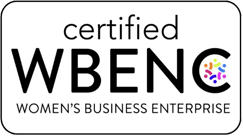What you’ll learn in this blog:
- A professional’s role with AI has evolved from content reviewer to strategic director and guide.
- Effective AI oversight hinges on the art of precise prompt engineering and iterative refinement.
- Using AI in life sciences requires navigating complex privacy, regulatory, and legal compliance issues.
As artificial intelligence (AI) becomes a central part of our daily work, especially in specialized fields like life sciences, the need for human oversight has never been more critical. Some worry that AI diminishes our critical thinking or leads to the publication of “AI-slop.” But when used correctly, AI can actually sharpen your thinking and help you develop more researched, better-communicated content.
For a life science professional, this means moving beyond simple quality checks1. The role is evolving from just reviewing AI output to actively guiding and directing AI systems. This transition is about strategic governance, meticulous prompt engineering, and a deep commitment to human-led verification to ensure accuracy and compliance.
From Quality Control to Strategic Leadership
Initially, our work with AI in digital marketing processes and content creation support was about routine quality control: checking facts and data, fixing grammar, and ensuring content met basic brand guidelines. However, in the highly regulated life science sector, the stakes are much higher. Inaccurate information can impact the scientific process and ultimately patient safety. This has expanded our role into one of strategic governance, ensuring that AI-assisted processes and content is not only precise but also fully compliant with strict scientific and regulatory standards.
The Power of Precise Prompt Engineering
One of the keys to effective AI oversight is meticulous prompt engineering. This is the art of crafting highly specific instructions that proactively mitigate potential inaccuracies and misinterpretations. When developing prompts for life science research and content development support, consider these critical elements:
Specificity and Context
Don’t just ask for general information. Instead of “Generate the latest research on diabetes,” be specific: “Synthesize recent clinical trial data on GLP-1 receptor agonists for Type 2 diabetes, emphasizing cardiovascular outcomes, for an audience of endocrinologists, citing peer-reviewed sources from the last two years.”
Defining Boundaries
Explicitly tell the AI what it can’t do. Prohibit speculative claims, avoid medical advice, and insist on strict adherence to approved regulatory guidelines and nomenclature (e.g., FDA, EMA).
Iterative Refinement
Prompt engineering is a cycle. Continuously evaluate the AI’s output and refine your prompts to achieve better results over time.
Privacy and Regulatory Compliance in AI-Assisted Life Science Marketing
Integrating AI into life science digital marketing presents significant legal and ethical challenges. Given the highly sensitive nature of health information and scientific data, vigilant oversight is essential to navigate a complex landscape of privacy, regulatory, and legal considerations. Life science digital marketing professionals must ensure that AI usage adheres to strict data privacy laws like HIPAA and GDPR, requiring careful data handling and robust security measures to prevent misuse. The evolving regulatory environment, with guidance from entities like the FDA and EMA and laws such as the EU’s AI Act, demands that content creators stay informed to maintain compliance and mitigate risk, as even a big beautiful bill signed into law has, for now, confirmed a complex patchwork of state-level AI regulations.
Accountability and Intellectual Property
A critical question remains: who is liable for an AI-generated error that leads to harm? As legal frameworks are still developing, the “human-in-the-loop” model is the current best practice for establishing clear accountability. A qualified professional’s final approval ensures that responsibility for the content remains with a human. Furthermore, AI usage raises complex intellectual property issues. Content creators must understand that the data used to train AI models may be copyrighted, and the content generated by AI may not be eligible for traditional copyright protection. Navigating this intricate legal environment requires a proactive approach to compliance, robust internal policies, and a continuous commitment to ethical practices.
The Indispensable Role of Human Oversight
Even with sophisticated AI, the human touch remains essential. The “human-in-the-loop” approach is vital, acknowledging AI’s current limitations. As a life science digital marketing professional, your responsibilities include:
Rigorous Factual Verification
Cross-reference every piece of AI-assisted content against validated scientific sources, clinical data, and regulatory mandates. Ensure assumptions from data are accurate and actionable.
Expert Interpretation
Provide the critical layer of human nuance and expert interpretation for complex scientific concepts and ethical considerations areas where AI lacks discernment.
Ensuring Compliance and Mitigating Risk
Guarantee that all processes and content adheres to strict industry regulations, minimizing legal and ethical exposures.
Strategic Alignment
Make sure the AI’s output aligns with your broader business and communication strategy and scientific objectives.
Embracing the Future of Life Science Digital Marketing with Strategic Human Leadership
The journey into AI-assisted life science content creation is not about automation replacing human expertise, but rather about amplifying our capabilities through strategic human leadership. As AI tools become increasingly sophisticated, our role evolves from mere content review to proactive direction-setting, where meticulous prompt engineering and rigorous human oversight are paramount. Navigating the complex landscape of privacy, regulatory compliance, and intellectual property demands continuous vigilance and a commitment to ethical practices. Ultimately, the future of impactful life science digital marketing lies in a powerful collaboration: AI provides the scale and speed, while human professionals provide the indispensable scientific accuracy, strategic insight, and ethical governance, ensuring content is not only effective but also responsible and trustworthy.
Contact Jill and Secure a Complimentary Life Science Digital Marketing AI Workflow Audit Today
References
- MarTech; Marketers have lots of AI, but not enough direction
- Stanford University, Human Centered Artificial Intelligence. A Framework to Report AI’s Flaws, Stanford University, Human Centered Artificial Intelligence.
- The White House, The Big Beautiful Bill.





